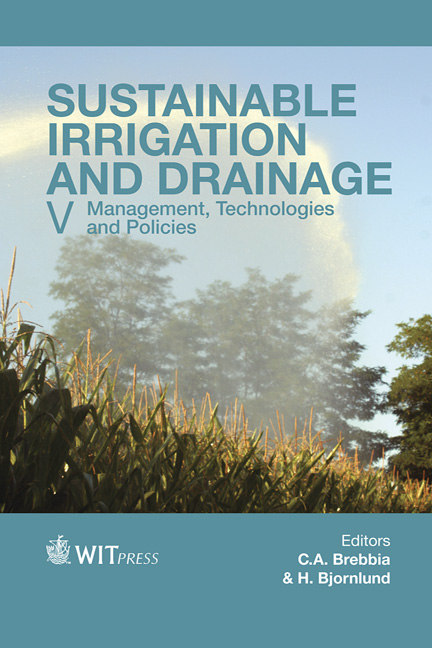The Assessment Of Automatic Irrigation Scheduling Techniques On Tomato Yield And Water Productivity Under A Subsurface Drip Irrigation System In A Hyper Arid Region
Price
Free (open access)
Transaction
Volume
185
Pages
12
Page Range
55 - 66
Published
2014
Size
414 kb
Paper DOI
10.2495/SI140061
Copyright
WIT Press
Author(s)
H. M. Al-Ghobari
Abstract
Water research studies in Saudi Arabia clearly showed the severe depletion of groundwater, therefore the necessity to water saving and conservation in agriculture is essential, especially in Saudi Arabia, where the water resources are scarce and the climatic condition is hyper arid. The irrigators are looking for more efficient scheduling and methods of irrigation than the traditional sprinkler and surface irrigation. Subsurface drip irrigation (SDI) with efficient irrigation scheduling can be a viable alternative where water is limited or when the irrigation capacity is insufficient with traditional methods. The scheduling methods used to irrigate the cop were evapotranspiration ET controllers (ET controller), soil moisture sensors (watermark sensor) and control irrigation (control treatment) based on weather data. These irrigation scheduling methods have not been evaluated for field crop under severe arid condition common to Saudi Arabia. This study indicates that there was a saving in irrigation water by 5.84% and 20.8% in the case of the ET controller compared to the other two methods respectively. Also, there was an increase in the yield by using ET controllers compared to watermark (Wmark) sensors and control treatments by 7.89% and 11.33%, respectively. However, the control treatment showed relatively high water uniformity and this could be due to high water application compared to other treatments. The ET controller technique may provide a valuable tool for scheduling irrigation in tomato farming and may be extendable for use in other similar agricultural crops. Hence, the ET controller irrigation technique could berecommended due to its easy application and greater water savings in areas experiencing severe drought, such as Saudi Arabia.
Keywords
subsurface irrigation, scheduling methods, water uniformity, water use efficiency, ET controller, smart irrigation





